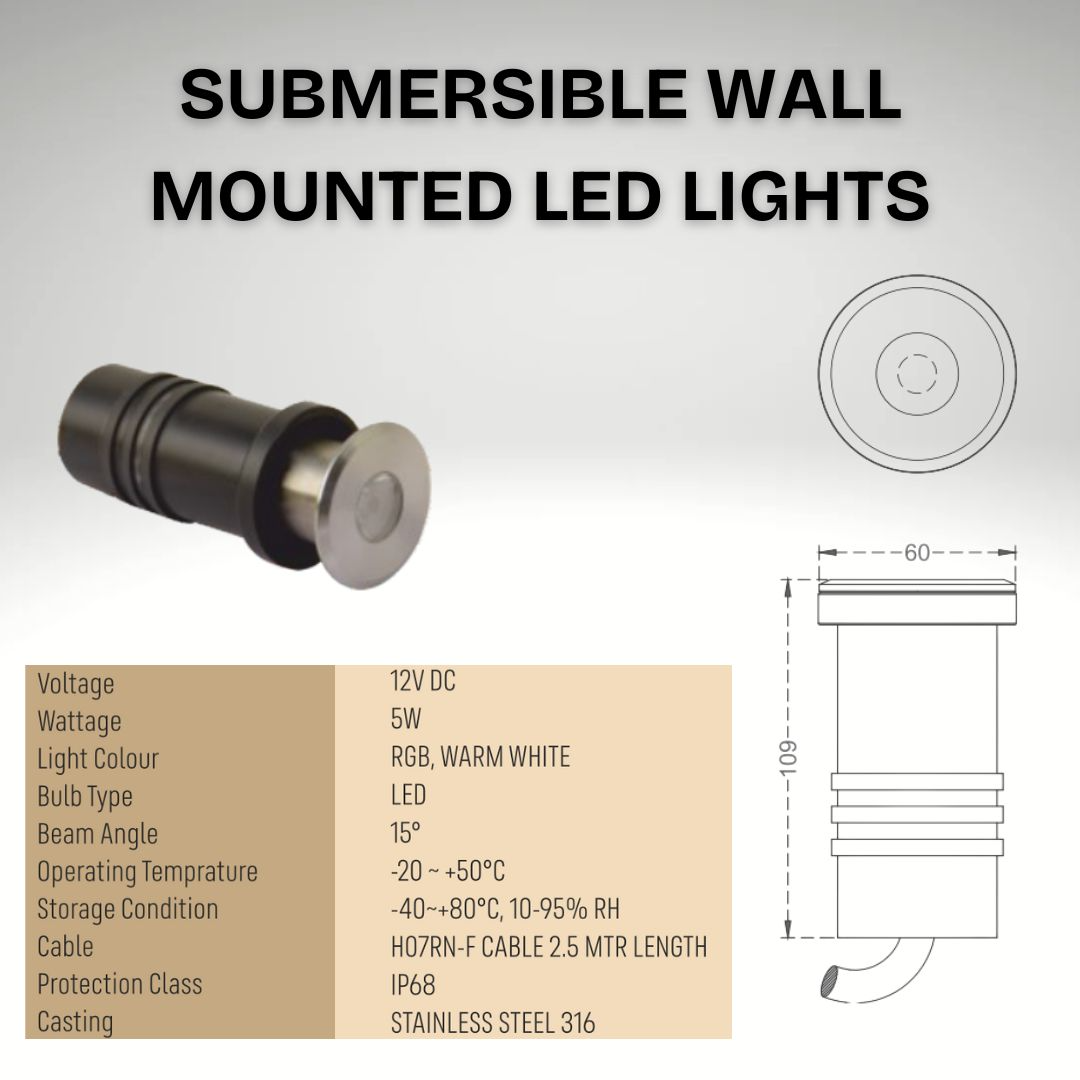
2025-03-19T11:13:53
SS 316 Buried Lights: The Ultimate Guide for Swimming Pools and Fountains *Published on March 19, 2025* Water features bring tranquility and beauty to any space, but it's the illumination that truly brings them to life after sunset. At the heart of this magical transformation are buried lights—specifically those crafted from SS 316 stainless steel. Today, we'll dive deep into why these particular fixtures have become the gold standard for underwater illumination in swimming pools and fountains. ## What Makes SS 316 Special? Stainless steel comes in many grades, but SS 316 stands apart as the premium choice for underwater applications. This isn't your ordinary stainless steel—it's engineered specifically to withstand some of the most challenging environments imaginable. SS 316 contains higher levels of chromium, nickel, and most importantly, molybdenum—an element that provides exceptional resistance to chlorides. This chemical composition creates a material that excels in environments where other metals would quickly deteriorate. ### Key Properties of SS 316: - **Superior Corrosion Resistance**: Especially against chlorine and salt water - **Excellent Heat Resistance**: Maintains structural integrity even with temperature fluctuations - **Exceptional Durability**: Withstands physical impacts and environmental stressors - **Hygienic Surface**: Naturally inhibits bacterial growth - **Low Maintenance Requirements**: Retains its appearance with minimal care ## Why Buried Lights Matter in Water Features Underwater illumination serves multiple purposes beyond simple aesthetics. In swimming pools, proper lighting enhances safety by improving visibility during evening swims. For fountains, lighting transforms water movements into dynamic visual displays that captivate viewers. Buried lights—fixtures installed flush with or recessed into the pool or fountain surface—create clean, unobtrusive lighting solutions. Unlike mounted lights that protrude into the water, buried fixtures preserve the clean lines of your water feature while minimizing potential hazards. ## The Technical Aspects of SS 316 Buried Lights ### Design Considerations Modern SS 316 buried lights incorporate several critical design elements: - **Watertight Sealing**: Multiple gaskets and sealing mechanisms prevent water intrusion into electrical components - **Heat Dissipation Systems**: Channeling thermal energy away from LED modules to extend lifespan - **Low-Voltage Operation**: Typically 12V or 24V for enhanced safety - **Flush Mounting Options**: Precision-engineered flanges and mounting rings for seamless integration - **Cable Protection**: Reinforced cable entries to prevent water migration ### Illumination Technologies Today's SS 316 buried lights predominantly use LED technology, offering advantages over traditional halogen or incandescent options: - Energy efficiency (up to 80% less power consumption) - Extended lifespan (typically 50, 000+ hours) - Reduced heat generation - Color-changing capabilities (RGB systems) - Instant-on performance without warm-up periods ## Installation Best Practices Proper installation is critical for both performance and longevity. Key considerations include: ### For New Construction 1. **Precise Positioning**: Lights should be placed strategically to eliminate dark zones and create desired effects 2. **Conduit Planning**: Dedicated waterproof conduits should be installed before concrete pouring 3. **Grounding Systems**: Proper electrical grounding for each fixture 4. **Niche Preparation**: Ensuring proper drainage within fixture niches 5. **Voltage Drop Calculations**: Accounting for cable length to maintain consistent brightness ### For Retrofits 1. **Core Drilling Techniques**: Precision cutting to minimize structural impact 2. **Existing Wiring Assessment**: Evaluating compatibility with new fixtures 3. **Sealant Selection**: Using appropriate waterproof sealants rated for underwater use 4. **Fixture Compatibility**: Ensuring new lights match existing cutout dimensions ## Maintenance Considerations SS 316 buried lights require minimal but specific maintenance: - **Regular Inspection**: Checking for water intrusion or seal degradation - **Lens Cleaning**: Removing mineral deposits or algae buildup - **Connection Testing**: Verifying electrical connections remain secure - **Sacrificial Anode Replacement**: For installations in saltwater environments - **Driver/Transformer Checks**: Ensuring power supply components function properly ## Common Challenges and Solutions ### Challenge: Galvanic Corrosion When different metals come into contact underwater, galvanic corrosion can occur. SS 316 helps mitigate this risk, but proper installation requires: - Isolation from dissimilar metals - Use of compatible fasteners and components - Implementation of sacrificial anodes in aggressive environments

Have a question? Ask here!
Required fields are marked *